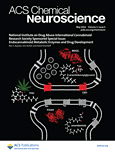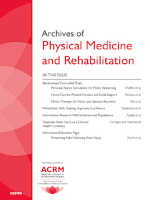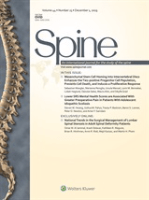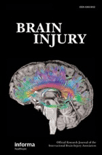
Neurotrauma Reports
Scope & Guideline
Exploring the frontiers of brain health and recovery.
Introduction
Aims and Scopes
- Traumatic Brain Injury (TBI) Research:
The journal aims to disseminate research findings related to the mechanisms, diagnosis, treatment, and long-term outcomes of traumatic brain injury, incorporating both clinical and experimental studies. - Spinal Cord Injury (SCI) Studies:
Focusing on spinal cord injuries, Neurotrauma Reports publishes studies addressing pathophysiology, recovery strategies, and rehabilitation approaches, aiming to improve patient outcomes. - Neuroinflammation and Neuroprotection:
Research on the role of neuroinflammation in injury and recovery processes is a core focus, as well as exploring potential neuroprotective strategies and biomarkers for therapeutic interventions. - Clinical and Experimental Methodologies:
The journal emphasizes diverse methodologies, including clinical trials, animal models, and advanced imaging techniques, to enhance the understanding of neurotrauma and its management. - Interdisciplinary Approaches:
Neurotrauma Reports encourages interdisciplinary studies that bridge neuroscience, rehabilitation, psychology, and public health to address the multifaceted impacts of neurotrauma.
Trending and Emerging
- Precision Medicine in Neurotrauma:
An emerging focus on personalized treatment strategies based on genetic, biochemical, and imaging data is gaining traction, reflecting a broader trend in medical research towards tailored therapies. - Long-Term Outcomes and Quality of Life:
There is an increasing emphasis on understanding the long-term consequences of neurotrauma, including cognitive, emotional, and social impacts, which is crucial for developing comprehensive care strategies. - Biomarkers and Neurodiagnostics:
Research into biomarkers for diagnosing and prognosticating neurotrauma is trending, highlighting the importance of developing objective measures to guide clinical decision-making. - Neurotechnology and Rehabilitation Innovations:
The integration of advanced technologies, such as robotics and virtual reality, in rehabilitation practices is emerging as a key area of exploration, aiming to enhance recovery outcomes for patients. - Impact of Comorbid Conditions:
There is a growing interest in studying the interactions between traumatic injuries and comorbid conditions, such as mental health disorders and substance use, to inform holistic treatment approaches.
Declining or Waning
- Historical Perspectives on Trauma:
Research focused on historical cases or retrospective analyses of trauma management has declined, potentially as the field shifts towards more current and practical applications. - Basic Science Mechanisms of Injury:
While foundational research is essential, there seems to be a waning emphasis on purely basic science studies without immediate translational relevance, as the journal increasingly prioritizes studies with direct clinical implications. - Traditional Rehabilitation Techniques:
There is a noticeable reduction in publications about traditional rehabilitation approaches, suggesting a move towards innovative and evidence-based practices in neurorehabilitation.
Similar Journals

ACS Chemical Neuroscience
Advancing Interdisciplinary Insights in Neuroscience.ACS Chemical Neuroscience, published by the American Chemical Society, is a premier journal dedicated to exploring the complex interactions between chemistry and neuroscience. With its ISSN 1948-7193 and a distinguished impact factor that positions it within the top quartiles across multiple categories, including Q1 in Biochemistry, Q2 in Cell Biology, and Q1 in Physiology, this journal serves as an essential platform for researchers engaged in cutting-edge studies from 2010 to 2024. Positioned within the top 15% of its field in Cognitive Neuroscience according to Scopus rankings, ACS Chemical Neuroscience strives to foster interdisciplinary collaboration, publishing significant advancements that integrate chemical concepts with neurological processes. Despite its traditional publication model, the journal is committed to maintaining rigorous peer-review standards and providing valuable insights that drive innovations in therapeutics and understanding the biochemical underpinnings of brain function. Researchers, professionals, and students alike will find in this journal a vital resource for the latest findings and methodologies in the dynamic intersection of chemistry and neuroscience.

Egyptian Journal of Neurosurgery
Bridging Research and Practice in NeurosurgeryWelcome to the Egyptian Journal of Neurosurgery, a leading publication in the field of neurosurgery, meticulously curated by SPRINGERNATURE. With an E-ISSN of 2520-8225, this journal has been committed to advancing the understanding of neurosurgical practices since embracing Open Access in 2018, ensuring widespread accessibility of groundbreaking research and clinical insights. Based in London, England, at CAMPUS, 4 CRINAN ST, LONDON N1 9XW, the journal aims to bridge gaps in neuroscience research, providing a platform for innovative studies, systematic reviews, and case reports. By publishing high-quality, peer-reviewed articles, the Egyptian Journal of Neurosurgery aims to equip researchers, professionals, and students with the knowledge and tools necessary to enhance patient care and outcomes in neurosurgical practices globally. Join our vibrant community of scholars dedicated to exploring the complexities of the brain and spine, and contribute to the evolving narrative of neurosurgery.

NEUROSCIENCE RESEARCH
Unveiling the Mysteries of the MindNEUROSCIENCE RESEARCH, published by Elsevier Ireland Ltd, is a leading journal in the field of neuroscience, with a notable reputation for disseminating high-quality research that spans a variety of topics within the discipline. With an ISSN of 0168-0102 and an E-ISSN of 1872-8111, this journal serves as a vital platform for both established researchers and emerging voices in the field. Ranking in the Q2 quartile in both Medicine and Neuroscience categories, it has been recognized as a reliable source of innovative findings since its inception in 1984, with continuous publication through 2024. Although it does not currently offer Open Access options, the journal is indexed in Scopus, holding a significant position at Rank #48/113 in General Neuroscience, reflecting its contribution to advancing the understanding of neural mechanisms across various contexts. With its address anchored in Ireland, NEUROSCIENCE RESEARCH plays an essential role in bridging scientific inquiry and practical applications, making it an indispensable resource for researchers, professionals, and students dedicated to the burgeoning field of neuroscience.

Neuropsychologia
Pioneering Research at the Nexus of Psychology and NeuroscienceNeuropsychologia, published by PERGAMON-ELSEVIER SCIENCE LTD, is a premier journal that delves into the intersections of psychology and neuroscience, specifically focusing on behavioral and cognitive processes. Since its inception in 1963, this esteemed journal has been a vital platform for researchers, professionals, and students, showcasing innovative studies and advancements in the fields of Behavioral Neuroscience, Cognitive Neuroscience, and Experimental Psychology. With a commendable impact factor, placing it in the Q2 category across multiple disciplines, Neuropsychologia is recognized for its contribution to the scientific community, ranking among the top journals in both Experimental and Cognitive Psychology and Neuroscience. The journal's commitment to excellence is evident in its rigorous peer-review process and its mission to disseminate cutting-edge research, making it an invaluable resource for those seeking to expand their knowledge and insights in neuropsychology. For further reading, the journal is accessible in both print and digital formats, ensuring that researchers can easily engage with the latest findings and theoretical advancements in this dynamic field.

ARCHIVES OF PHYSICAL MEDICINE AND REHABILITATION
Advancing Patient Care with Groundbreaking InsightsArchives of Physical Medicine and Rehabilitation, published by W B Saunders Co-Elsevier Inc., is a premier academic journal dedicated to the fields of physical therapy, sports therapy, and rehabilitation. Since its inception in 1945, it has evolved to provide a platform for groundbreaking research and insightful discourse that shapes clinical practice and enhances patient outcomes. With a notable impact factor and ranking in the top quartiles of its respective categories, this journal consistently showcases the most innovative studies, systematic reviews, and evidence-based practices that drive forward the understanding of rehabilitation medicine. As a vital resource for researchers, healthcare professionals, and students alike, it contributes significantly to the advancement of knowledge in rehabilitation sciences. With an aim to bridge the gap between research and practice, the journal invites contributions from all disciplines related to physical medicine and rehabilitation, fostering a collaborative environment that promotes the dissemination of impactful findings.

Journal of Neurological Surgery Part A-Central European Neurosurgery
Transforming ideas into impactful clinical solutions.The Journal of Neurological Surgery Part A – Central European Neurosurgery is a prominent peer-reviewed publication dedicated to advancing the field of neurosurgery and its related disciplines. Published by THIEME MEDICAL PUBL INC and based in Germany, this journal has been a platform for critical advancements in clinical neurology and surgery since its inception in 2012, and it is set to continue through 2024. With a current impact factor reflecting its influence in the medical community, the journal ranks in the Q3 quartile across the categories of Medicine (miscellaneous), Neurology (clinical), and Surgery for 2023, ensuring a robust participation from the academic and medical professionals alike. It is indexed in Scopus, highlighting its global recognition, with rankings of #248/551 and #257/400 in the fields of Medicine & Surgery and Neurology, respectively. The journal features a range of open access options, thereby facilitating unrestricted dissemination of high-quality research to a wide audience. As a valuable resource, it aims to promote the exchange of innovative ideas and research findings that can contribute to clinical practice and improve patient outcomes in neurosurgery.

ACTA NEUROCHIRURGICA
Elevating Knowledge in the Art and Science of Neurosurgery.ACTA NEUROCHIRURGICA, published by Springer Wien, stands as a pivotal resource in the realms of neurology and surgery. With its long-standing tradition dating back to 1950, this esteemed journal not only contributes to the advancement of clinical neurology but also excels in surgical methodologies, evidenced by its impressive ranking in the Q1 category for Surgery and Q2 for Neurology (Clinical). With a robust Scopus ranking placing it in the top 20% of surgery journals and the 55th percentile in clinical neurology, it demonstrates a significant impact within its field. Researchers, professionals, and students alike benefit from its rigorously peer-reviewed articles that encompass a wide scope of both theoretical and practical insights. Although not an open-access journal, ACTA NEUROCHIRURGICA remains essential for anyone committed to keeping up with the latest discoveries and innovations in neurosurgery and neuroscience. Located in the heart of Austria at Prinz-Eugen-Strasse 8-10, A-1040 Vienna, this journal continues to be a cornerstone for scholarly communication, guiding future research directions and fostering collaborations among experts.

SPINE
Connecting researchers and practitioners in spine health.SPINE, published by Lippincott Williams & Wilkins, is a leading academic journal in the fields of Orthopedics, Neurology, and Sports Medicine. Established in 1976, this reputable journal has made significant contributions to advancing clinical and scientific knowledge, with its impactful research evidenced by its prestigious Q1 classification across three essential categories in 2023 and a notable ranking of #51 in Orthopedics and Sports Medicine and #117 in Clinical Neurology as per Scopus. SPINE aims to disseminate high-quality research articles, reviews, and clinical studies that address cutting-edge topics and challenges in spine-related health, thereby serving as an invaluable resource for researchers, healthcare professionals, and students alike. With its commitment to rigorous peer review and a wide readership, SPINE continues to be at the forefront of innovations in spine health & disease from 1976 to 2024, upholding its reputation as a catalyst for progress in the medical community.

Translational Neuroscience
Connecting Scholars and Practitioners for Impactful Discoveries.Translational Neuroscience, published by DE GRUYTER POLAND SP Z O O, is a leading open-access journal since its inception in 2015, dedicated to the multidisciplinary exploration of neurological research and its clinical applications. With an ISSN of 2081-3856 and an E-ISSN of 2081-6936, the journal serves as a crucial platform for scholars and practitioners to disseminate innovative findings and theoretical advancements in the field of neuroscience. Covering various aspects of general neuroscience, it is ranked in the Q3 quartile for 2023 and positioned at Rank #75 out of 113 in its category, reflecting its growing impact within the scientific community. The journal strives to bridge the gap between laboratory research and clinical practice, fostering collaboration among researchers, clinicians, and educators. The editorial team is committed to maintaining high publication standards that engage the audience with rigorous research while promoting a culture of open science. For those interested in the forefront of neuroscience research, Translational Neuroscience offers an invaluable resource for knowledge and innovation.

BRAIN INJURY
Pioneering insights in neurology and neuroscience.BRAIN INJURY is a leading international journal published by Taylor & Francis Ltd, dedicated to advancing the study of traumatic brain injury and its extensive neurological implications. With a rich history since its inception in 1987, this journal has established itself as a vital resource for researchers, practitioners, and policymakers in fields such as Neurology, Neuroscience, and Developmental Psychology. Holding a commendable Q2 quartile ranking in both Developmental and Educational Psychology and Clinical Neurology, as well as a Q3 ranking in Miscellaneous Neuroscience, BRAIN INJURY provides a platform for high-quality research that drives innovation in clinical practice and rehabilitation strategies. Although the journal is not open access, it continues to facilitate wide-reaching scholarly communication across the globe, contributing significantly to the understanding of brain injuries and their effects. Researchers, professionals, and students will find BRAIN INJURY a critical resource for both new insights and comprehensive reviews within this vital area of health science.